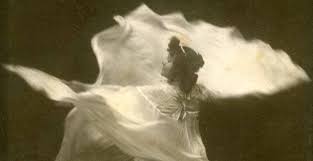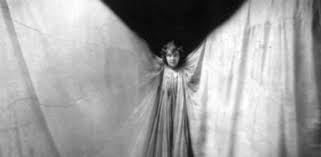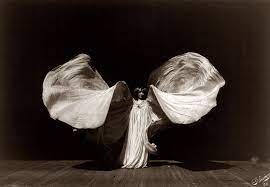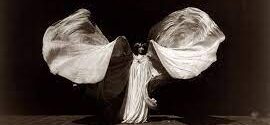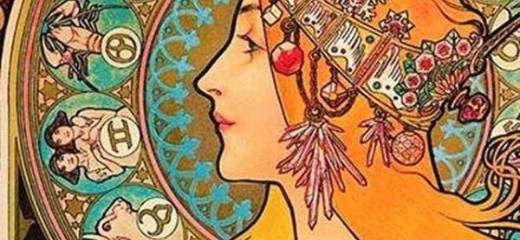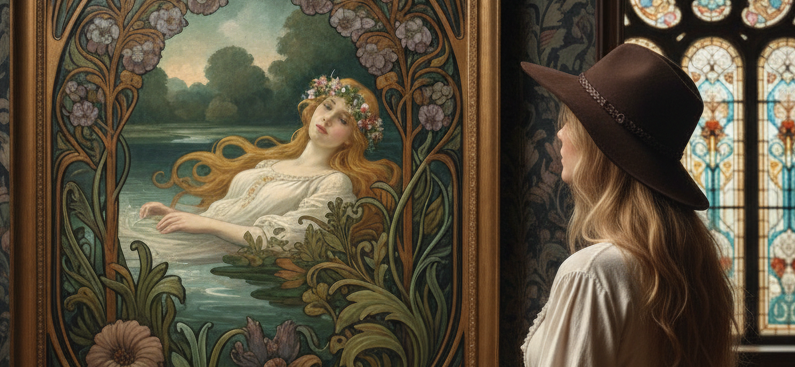Art Nouveau was a style that emerged in the late 19th century and was characterized by organic, flowing lines and patterns inspired by nature. It influenced a wide range of design fields, including architecture, furniture design, graphic design, and other decorative arts.
There are several MOVIES that feature Art Nouveau design or architecture as a prominent element of their visual style or setting. Some examples include:
- “The City of Lost Children” (1995): This French science fiction film is set in a dystopian city that is heavily influenced by Art Nouveau design. The film’s unique, surreal visual style was inspired by the work of artist Jean Cocteau and the Art Nouveau movement.
- “The Grand Budapest Hotel” (2014): This film, directed by Wes Anderson, is set in the fictional Republic of Zubrowka and features a lavish, Art Nouveau-inspired hotel as a central location. The film’s sets and costumes were designed to be evocative of the Art Nouveau style, and the hotel’s interiors and exteriors were influenced by the work of architects such as Hector Guimard and Antoni Gaudí.
- “The Phantom of the Opera” (2004): This film adaptation of the stage musical is set in the Paris Opera House, which was designed in the Second Empire style. However, the film’s production design and costumes were heavily influenced by the Art Nouveau style, with many of the sets and costumes featuring organic, flowing lines and patterns reminiscent of the movement.
- “Spirited Away” (2001): This Japanese animated film, directed by Hayao Miyazaki, features a number of Art Nouveau-inspired elements, including the design of the bathhouse in which much of the action takes place. The film’s production design was influenced by a variety of sources, including Art Nouveau and Art Deco, and the bathhouse in particular was inspired by the work of architects such as Antoni Gaudí.
There are several BOOKS that focus specifically on Art Nouveau or feature Art Nouveau as an important element of their content. Some examples include:
- “Art Nouveau” by Paul Greenhalgh: This book is a comprehensive overview of the Art Nouveau movement, including its origins, key figures, and major works. It features numerous illustrations and photographs of Art Nouveau architecture, furniture, graphic design, and other decorative arts.
- “Art Nouveau: The Complete Graphic Works” by Max Gallo: This book is a collection of Art Nouveau graphic design, including posters, advertisements, and other printed materials. It features works by some of the most famous Art Nouveau designers, such as Alfons Mucha and Henri de Toulouse-Lautrec.
- “Gaudí” by Robert Hughes: This book is a biographical study of the famous Catalan architect Antoni Gaudí, whose work was heavily influenced by the Art Nouveau movement. It explores Gaudí’s life and work in detail, including his iconic buildings such as the Sagrada Família and Park Güell.
- “The World of Art Nouveau” by Umberto Allemandi: This book is a broad overview of the Art Nouveau movement, including its origins, key figures, and major works. It features numerous illustrations and photographs of Art Nouveau architecture, furniture, graphic design, and other decorative arts, and includes chapters on the movement’s influence in different parts of the world.
Some examples of DESIGNS that were inspired by Art Nouveau include:
- Buildings and structures: Many architects, including Hector Guimard and Antoni Gaudí, were influenced by the Art Nouveau movement and incorporated its organic, flowing lines and patterns into their buildings and structures. Examples include Guimard’s famous Paris Metro entrances and Gaudí’s Sagrada Família in Barcelona.
- Furniture: Art Nouveau furniture is characterized by its use of natural materials and organic, flowing lines. Designs often feature curved, sinuous forms and intricate, decorative details.
- Graphic design: Art Nouveau had a significant influence on the graphic arts, with many designers using the style to create posters, advertisements, and other printed materials. The style was particularly popular in Europe, and it spread to North America and other parts of the world.
- Other decorative arts: Art Nouveau influenced a wide range of other decorative arts, including jewelry design, pottery, glassware, and textiles. Designs often feature organic, flowing lines and patterns, as well as intricate, decorative details. It’s worth noting that Art Nouveau was a style that emerged in the late 19th century and was primarily associated with the visual arts and design.
The Art Nouveau movement was primarily associated with visual art and design, but its influence extended far beyond those disciplines. Some musicians and bands have been inspired by the movement and incorporated its visual style or aesthetic into their music or album artwork. Aesthetic Perfection is an example of a band that has used Art Nouveau-inspired imagery in some of their album covers and music videos, giving a nod to the movement’s decorative and ornate style. Similarly, Rasputina has used Art Nouveau-inspired themes in some of their music and live performances, adding a touch of whimsy and fantasy to their stage presence.
It is not a musical style in the traditional sense, and there is no specific “Art Nouveau” music genre. While some musicians have explicitly referenced the Art Nouveau movement, others may have been influenced by its aesthetic in a more indirect way. For example, a band may incorporate elements of the movement’s organic forms and curves into their music or stage presence without explicitly referencing Art Nouveau. This could be a more subjective interpretation and would depend on the individual listener’s perspective. However, it’s possible that the movement’s influence can still be seen in contemporary music and performance art, albeit in more subtle ways.
In conclusion, while the Art Nouveau movement was primarily associated with visual art and design, its influence extended to other areas of artistic expression, including music and performance art. Some musicians and bands have explicitly referenced the movement in their work, while others may have been influenced by its aesthetic in a more indirect way. Regardless, the movement’s ornate style and emphasis on organic forms and curves continue to inspire artists and creatives today.
Loie Fuller’s use of lighting and flowing costumes in her interdisciplinary performances perfectly embodied the Art Nouveau focus on natural forms and artistic experimentation. Her innovative approach paved the way for future artists to explore new possibilities in performance art. More information on her fantastic work HERE.
If you are lucky enough to travel, at https://artnouveau.club you can keep updated on what is happening in the main European capitals. For example, stay current on Barcelona’s vibrant art and culture with the Art Nouveau Club Barcelona page. For an intimate look at Gaudí’s hidden treasures, the Hidden Gems of Gaudí in Barcelona tour provides an unforgettable private experience.

